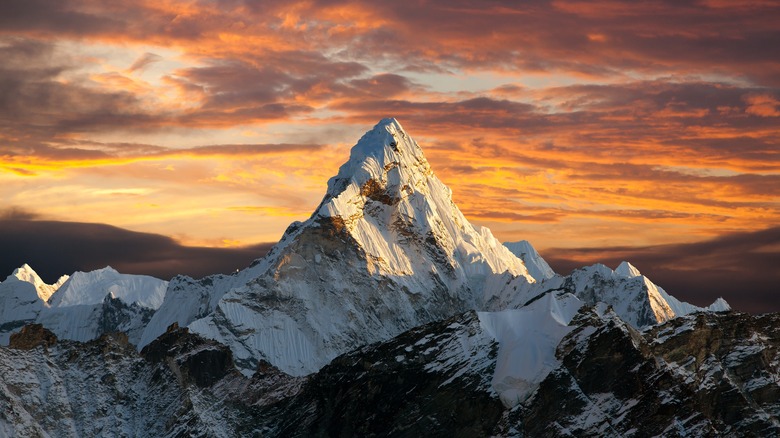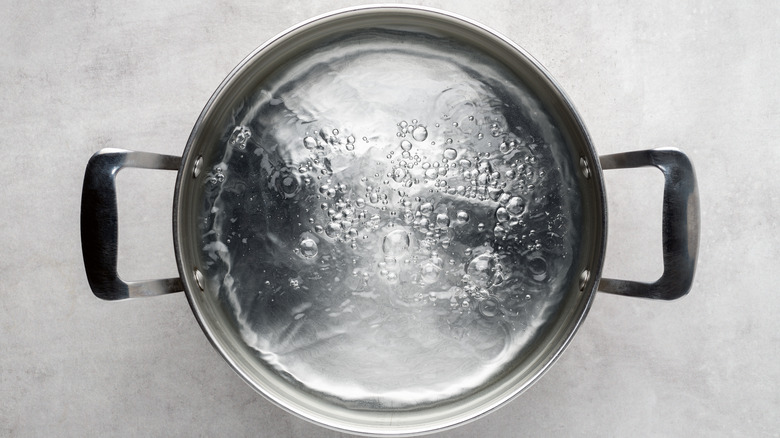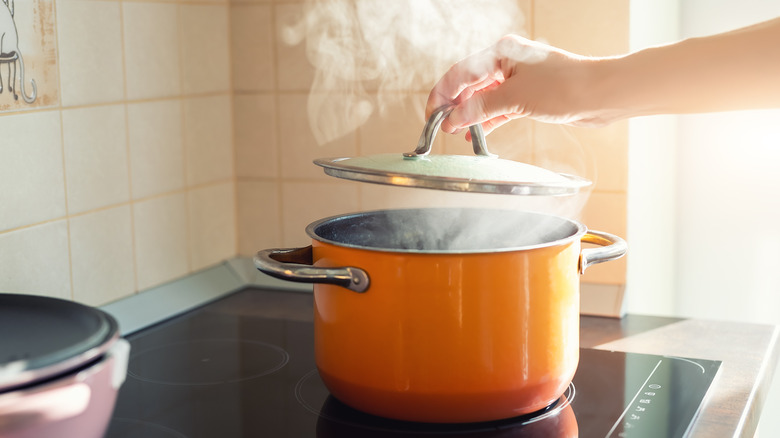The Real Reason Boiling Water Happens Faster On Mt. Everest
Climbing to the top of Mt. Everest is one of the most grueling endeavors undertaken by humans. To make a proper attempt at summiting the mountain requires at least a year of training and then, once you're on the mountain, it takes two months to get to the top. Given the expense and energy typically invested to get to the peak, a climber couldn't be faulted for wanting a hot cup of tea or coffee to give them the energy they need to get them back to base camp (via BMC and Alpine Ascents).
But if a mountaineer were to idle on the summit (not recommended), to make a hot beverage they'd find something odd. The water would be boiling faster than expected. If they had brought a thermometer with them, they would see that instead of the water boiling at the expected 100 degrees Celsius, the water would be boiling at a mere 70 degrees (via I Forgot It's Wednesday).
What is boiling?
At its simplest, boiling is when any liquid changes from a liquid to a gas, but let's dig a little deeper. There are two variables that affect the boiling point of a liquid: vapor pressure and atmospheric pressure (via LibreTexts).
Vapor pressure is kind of like the internal pressure of a liquid straining to evaporate. Because water molecules are strongly attracted to each other, they don't particularly want to evaporate, thus water has a low vapor pressure. Atmospheric pressure is literally the weight of all the air above us. That weight compresses the molecules of a liquid, making it more difficult for energetic molecules to escape their liquid brethren into a gaseous state.
Heat increases the vapor pressure of a liquid. If a liquid is heated to the point where its vapor pressure is the same as the atmospheric pressure, pockets of vaporized molecules begin to form bubbles and float to the surface. This is boiling.
Mt. Everest and beyond
The pressure on Mt. Everest is about a third of the pressure at sea level (via LibreTexts), therefore the temperature required to boil any liquid is less than it would be at the beach. Unfortunately for tea or coffee enthusiasts out there, you'd never be able to brew your beverage. One of the quirks of boiling liquids is they maintain a relatively constant temperature, and 70 degrees isn't hot enough to brew coffee or tea (via Artful Tea and Coffee Chronicler).
Altitude presents all kinds of problems that any high-altitude gourmand should be aware of. Gasses expand more, so breads and cakes tend to rise more than they normally would. Because liquids evaporate at lower temperatures, recipes at high altitudes need more in the recipe to prevent over-drying (via Betty Crocker).
Where things get really weird is on other planets. On Mars, the atmospheric pressure is about four times less than that on Everest. Water there would boil at around -4 degrees Celsius, but with an average temperature of -63 degrees, it will only boil on really hot days (via NASA). The atmospheric pressure on Venus, on the other hand, is about 90 times greater than that on Earth. Water on Venus would boil at nearly 300 degrees, but with an average temperature of 464 degrees, the water would vaporize before you could drink it (via NASA).


